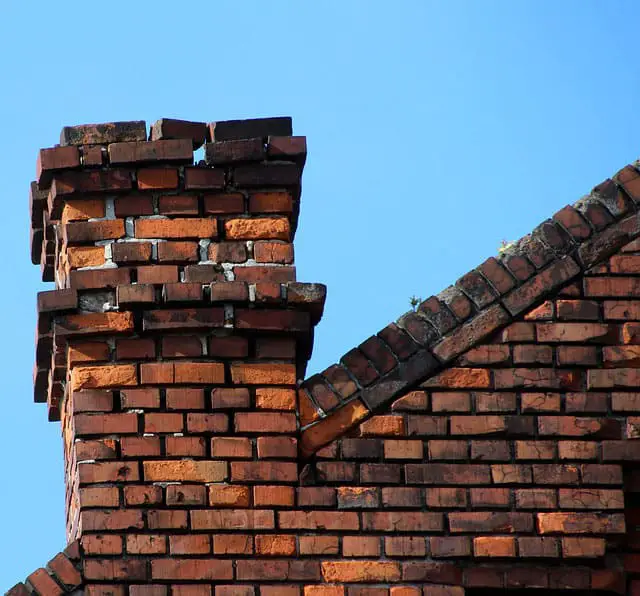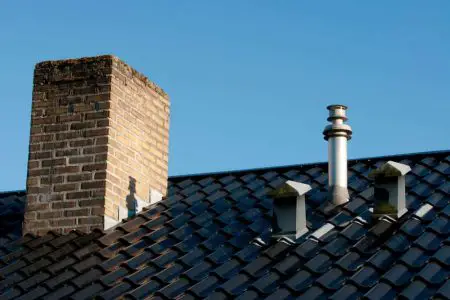Choosing to go for a tankless water heater is a smart decision for a lot of reasons. And buying it and installing it is usually pretty straightforward.
Where things get murky is always around what kind of venting kit is needed. Where you vent your tankless and what kind of venting kit you need can affect your budget considerably, especially if you don’t get it right.
This article is here to help you figure out the requirements for your type of tankless water heater and take the mystery out of things.
Let’s get right to the questions about venting and the different venting kits that are available.
Types of Tankless Water Heater Venting Kits
To get the most out of your tankless water heater you need the right venting and termination kit.
For vent kits, make sure you read the directions carefully for your particular tankless heater. Many models include the vent when you buy it, but you may need to buy one separately, or at least have extra length if you aren’t venting right where the unit is located.
Make sure you get the right size, usually either 3” or 5” in either PVC or Category 3 stainless steel.
Here are some of the termination kits that you’ll need to finish the venting to the outside.
Horizontal venting kits
Wall venting is the process of forcing the exhaust fumes out of the home horizontally, as opposed to a vertical exhaust through a roof. This method greatly decreases the labor and expense involved in venting a tankless water heater.
Wall mounted, powered venting essentially uses a small electric fan to assist the fumes in leaving the home, preventing any buildup of carbon monoxide inside the structure..
Table could not be displayed.Above Roof Venting Kit
Table could not be displayed.Read on to see which tankless water heater venting kits are going to work for your scenario. It is highly dependent on where you need to install your heater as to which vent is necessary.
Direct Vent vs Power Venting
These are the two major differences in venting that will affect how and where you install your tankless water heater.
Direct Vent
This type of vent draws air in from the outside and then vents the exhaust out as well. There are two types of venting available for this type of tankless water heater. There are concentric and dual.
A concentric vent kit has both the intake and the outgoing in the same pipe. The exhaust is in the center so that the outside of the vent does not heat up. This makes it ideal as you can then place the tankless wherever you’d like as sealing it is no issue.
There are dual vent systems where you will have two pipes. One with the exhaust and one with the intake. This system is slightly more limiting as the exhaust pipe can get hot so the location matters more. The material is also a factor as you can’t just put silicone on stainless steel to seal it. Most of the time these are made out of PVC.
With either the concentric or non, the benefit of a direct vent system is that you can put the tankless water heater in smaller spaces and have a wider range of possibilities available.
Power Vent
A power vent has the intake on the actual body of the tankless heater and not through a pipe or vent. This takes in the air from the surroundings so it uses the inside air to vent, with an exhaust leading out of the house.
This may limit some people on the placement of the tank since it needs a larger area to be able to get the proper ventilation for the air intake.
If you plan to install this in a basement then that is generally your best bet since there is plenty of space there.
Can you Vent a Tankless Water Heater through the Chimney?

Technically you can vent your tankless heater through the chimney but only in certain circumstances. It really is not a good idea. The biggest issue is that the condensate is very acidic and will corrode the masonry of a chimney.
Yes, you could line it with stainless steel, but there are other factors involved which makes this a bad solution to your venting.
Here’s a list of some reasons why you shouldn’t vent through your chimney.
- Shouldn’t share venting – Your tankless water heater needs to have its own vent and cannot share one with a furnace or other water heaters.
- Needs PVC or Category III stainless steel – Anything else faces severe corrosion that will end up shortening the lifespan of your tankless, will cost money to replace masonry of your chimney and can even end up leaking carbon monoxide into your home. If you use the galvanized vent from an old tank heater, that will rust away in no time.
- Vent must be sloped – The position of the vent should be sloped downward so that the condensate doesn’t drip back into the heat exchanger. This may not be possible in a chimney that can’t be modified. Even a liner will likely not give you the proper angle to drain away the condensate. Some tankless heaters do come equipped with a drain to prevent it from entering the heat exchanger, however.
- Vent must be short – Getting your vent to the chimney and then send the exhaust through the chimney and out of the house will require a lot of length. This increases the risk of carbon monoxide entering your home and it quite dangerous.
It just makes sense to find the right place to install your tankless water heater. The idea is that the shorter the vent is the better. I wrote a very in-depth article about the requirements and best practices for installing a tankless water heater. Don’t even consider venting through your chimney. Click on that link to read the whole article before you decide on a spot to install. It will save you a lot of headaches later on.
Tankless Water Heater Venting Options

You’ve got plenty of options for venting so, hopefully, this article is not giving you any anxiety about your venting options and placement.
Here are a few things to consider before settling on the type of tankless and where to install it.
Outside installation
If you live in a warm area, or even in a cold area if you protect your unit, you can install it anywhere you want since there is no venting needed. Now, if you’ve already read the article I linked to above then you understand that there are some requirements when setting up a tankless outside, but you do get a lot more options on where to place it. It also frees up tons of space inside as well as going easy on your wallet since you don’t have to buy a kit.
Venting Through Roof
Roof venting for a direct vent tankless water heater is often laid out during the construction of a home. This allows the vent pipe to remain somewhat concealed, however this will vary from design to design. In some cases it is necessary to directly vent a tankless water heater through the roof. Generally speaking, this is a last resort as any roof should stay as intact as possible.
However, it is possible to vent through a roof by using a device called a vent boot. It is not recommended to vent a tankless water heater through the roof if the home has tile, slate, or any thick style of roofing without specially made kits. Typical kits found in home improvement stores will usually only include a vent boot designed to work with a thin shingle or metal metal roofing panels.
To install a roof vent, professional installers will note the location of the vent on the roof as it exits the attic and remove the shingles about 18” surrounding the mark. They will then cut a square or circular hole (either is fine) and extend the pipe through the roof.
The vent boot is then slipped over the pipe and mounted to the roof decking. The boot will typically have a special heat resistant flexible rubber sleeve that provides a water tight seal against the pipe. A special cap is then installed onto the pipe, much like a chimney cap. This cap prevents moisture from falling into the pipe and making its way down to the exhaust port on the heater.
Basement Installation
Most people replacing a tank water heater will likely be setting up the tankless in the basement. Once you take your tank out, there is tons of room now to place your tankless. Then the venting is usually going to be easier. Just remember that you can’t use the same vent as the furnace and you are good.
The key to remember though is that placing the tankless where you had the boiler may seem like the most logical spot, but it isn’t necessarily your best option.
Your best option is to place the tankless heater where the vent can be installed directly outside without needing to run too much pipe to get there.
You may need to go through the wall to do this, but the extra installation cost is worth it.
Attic Installation
Whether or not you can install a tankless water heater in your attic depends on the heater itself and also your attic.
If you have a proper attic that isn’t just a crawlspace, then you can install a power vent or direct vent. You have options since you should have enough open space for a power vent to draw in enough air.
Venting outside is the tricky part. There are local ordinances at play that will determine what kind of venting you use and what the clearances are above the roof. Remember, the exhaust is really hot and won’t have much space to cool down. Using a concentric vent is your best bet as the pipe does not get hot with the exhaust being the inside pipe.
Besides the venting, you do need to consider access. Will you be able to easily reach the control panel to change the temperature? Will you be able to do your routine maintenance with the space you have there?
You’ll need to flush your unit out once per year which will require easy access. Take a look at an in-depth article I wrote about tankless water heater maintenance to see the ins and outs of what is required. This will help you determine if you’ll have enough room in your attic for this.
Closet Installation
Many people love the idea of placing the tankless heater in a closet. It provides quick and easy access when you need to reach the unit.
And the venting is generally very easy to install since you just need to make a hole through the side of the house. This is much easier to do and much cheaper than having to go through a basement wall or run extra length of venting to reach the outside.
What you do have to keep in mind is how much space you’ll have for your tankless in a closet. Remember that a power vent needs to have enough space to properly draw in air for the combustion.
If your closet is tight then a direct vent is your best bet.
Under Sink
This is only an option if you have an electric point of use tankless water heater. There is not enough space for a gas or propane one.
FAQ Tankless Water Heater Vent Kits
Do Gas Tankless Water Heaters need Venting?
Gas-fueled tankless water heaters that are installed inside the house needs to be vented to the outside. It doesn’t matter if the gas is natural gas or propane, it needs to be vented. But, if you have an outdoor gas unit, then you don’t need a vent as the exhaust is already outside.
What happens if you don’t vent your gas tankless correctly?
If a tankless water heater is not vented properly a number of things can happen. All of them unpleasant and some quite dangerous.
The exhaust is a gas condensate that is highly acidic and corrosive to the venting so they require the right material. If the condensate doesn’t exit the vent properly and runs back into the heat exchanger, then your unit will fail much quicker than it should.
Also, if not properly vented, you open yourself up to a high risk of carbon monoxide poisoning. It’s very important to have the right kind of venting kit for the type of model and to follow the instructions to a T when installing it.
Does an Electric Tankless Water Heater need Venting?
No, electric tankless water heaters don’t need to be vented. If you have issues with where to place a tankless water heater due to venting concerns, then your best bet may be to get an electric tankless water heater.
You do have way more options with electric than with gas or propane, but the issue generally is the GPM. You may need to get more than one if you have heavy water usage at any one time.
To find out how big of a tankless water heater you need, then check out this article.
Electric tankless water heaters are very efficient since they don’t require venting and don’t lose their heat. All of the energy needed to heat the water stays there with no loss. When you go for an electric you have way more options available.
Can You Use PVC to Vent a Tankless Water Heater?
Yes. In fact, PVC, along with stainless steel vent piping is the preferred design for tankless water heaters. This is because other common types of pipe cannot withstand the caustic condensate created when the heater is in operation. Copper or similar piping materials will be damaged very quickly. Gas powered tankless water heaters must vent through either the wall or the roof, if they are located inside the structure.
Using PVC or CPVC pipes specially made for venting will usually be the most cost effective and longest lasting solution. Since a wall is usually closer to the water heater than the roof, most of the time that is the location of the vent. PVC venting kits, whether designed for direct or powered venting are usually the preferred method. This venting method prevents the buildup of noxious gases such as carbon monoxide, a byproduct of gas combustion.
What are concentric vents?
Concentric vents only require one perforation in the wall, as concentric vents are really two pipes in one. The outer pipe draws fresh air from outdoors, while the inner pipe exhausts the noxious fumes back outside. This design keeps the unheated fresh air near the wall surface, while insulating the wall from the heated fumes.
Final Thoughts
I am a firm believer that in most cases a tankless water heater is the way to go for your hot water needs. They are extremely efficient and provide a lot of benefits. In fact, if you want to see the pros and cons to really understand if a tankless water heater is right for you then click that link.
It does get confusing when you need to consider the ins and outs of tankless water heater venting. A tank system may be more straight forward, but I believe when you have the right vent for the right tankless for your needs, then it is worth the extra time to do your research.
Horizontal Venting Kits
Table could not be displayed.Above Roof Venting Kits
Table could not be displayed.
Nick Lopresti is the founder of YourH2Home and a home improvement expert. He has years of experience writing about various home improvement topics, mostly as it pertains to water systems.
